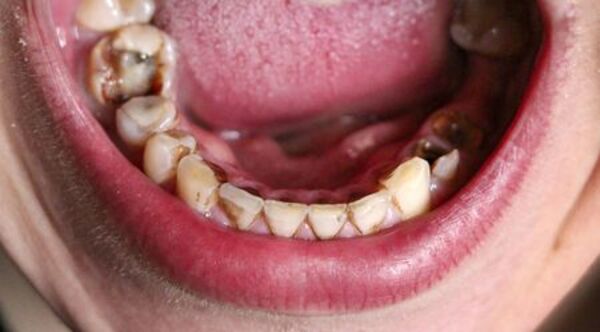How To Stop Tooth Decay From Spreading
In order for tooth decay to be established, that tooth should have acid-producing bacteria around it, which is in addition to food for the bacteria to feed upon. Teeth that are vulnerable to decay will have little to no fluoride in the enamel to eliminate the plaque. Fluoride can ruin decay, although it will not be able to do much once the decay has begun to consume the teeth.
Poor Hygiene Practices And Tooth Decay
Poor hygiene practices will enable the plaque and tartar to build up around teeth and accelerate the process of decay. Although your mouth has a lot of bacteria that are always present, only one type will produce the acid that leads to dental caries. Some individuals have active tooth decay that is always present in their mouths. Parents with active decay can quickly pass the decay on to a child or loved one through consuming, drinking from the very same glass, or even kissing.

When the decay has actually settled in the tooth’s enamel, it will advance extremely slowly. Once it has actually made it through to the second layer of the enamel, it will spread quicker as it heads toward the pulp. The pulp is an important area of the tooth, as it includes the nerves and blood supply. This is where the discomfort will be the most extreme, as the decay will begin to eat at the nerves.
The Most Preventable Kind Of Tooth Decay
Although decay can take 2 – 3 years to get through the enamel, it can make it from the dentin to the pulp in less than a year. Once it makes it to the dentin, the decay can damage the majority of the tooth structure in a matter of weeks – or months. The most preventable kind of tooth decay, known as smooth decay, also grows the slowest. It starts out as a white area in the tooth, where the bacteria dissolves the enamel. Smooth decay is extremely typical amongst those 20 – 30 years of age.
The Prevalence Of Pit Or Crack Decay
Pit or crack decay is a bit more serious, forming along the narrow grooves in the chewing side of the molars. It progresses more quickly and can eat your teeth a lot faster than smooth decay. Due to the grooves being so narrow, it can be difficult to clean them with regular bushing. Although you may brush regularly, this type of decay is hard to prevent without going to the dentist for regular check-ups and cleansing.
Root Decay Starts On The Surface
The last type of decay, called root decay, begins on the surface of the root. Root decay prevails in middle-aged individuals. It is usually the result of a dry mouth, a great deal of sugar, or not taking care of your teeth. Root decay is the most challenging to prevent, and the most severe type of dental caries. It can consume teeth quickly, leaving you no choice but to get the impacted teeth removed.
Tooth decay is no laughing matter, and ought to always be dealt with before it has time to spread and impact more of your teeth. If you visit your dentist for your routine examinations and cleansing, you can usually prevent it from the beginning. You must constantly brush every day and use mouthwash such as Listerine or other known brands, in order to eliminate bacteria and other harmful germs. Bacteria is constantly present in your mouth, although you can use mouthwash to kill it. If you look after your teeth and follow the recommendations of your dentist, you can normally avoid dental caries prior to it having a chance to eat at your teeth.








